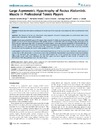Identificador persistente para citar o vincular este elemento:
https://accedacris.ulpgc.es/jspui/handle/10553/6572
| Campo DC | Valor | idioma |
|---|---|---|
| dc.contributor.author | Sanchis-Moysi, Joaquin | en_US |
| dc.contributor.author | Idoate, Fernando | en_US |
| dc.contributor.author | Dorado, Cecilia | en_US |
| dc.contributor.author | Alayon, Santiago | en_US |
| dc.contributor.author | Calbet, Jose A L | en_US |
| dc.contributor.other | Cecilia, Dorado-Garcia | - |
| dc.contributor.other | Calbet, Jose A | - |
| dc.contributor.other | SANCHIS-MOYSI, JOAQUIN | - |
| dc.contributor.other | Idoate Saralegui, Fernando | - |
| dc.date.accessioned | 2011-11-02T02:31:00Z | - |
| dc.date.accessioned | 2018-03-08T13:11:12Z | - |
| dc.date.available | 2011-11-02T14:34:13Z | - |
| dc.date.available | 2018-03-08T13:11:12Z | - |
| dc.date.issued | 2010 | en_US |
| dc.identifier.issn | 1932-6203 | en_US |
| dc.identifier.uri | https://accedacris.ulpgc.es/handle/10553/6572 | - |
| dc.description.abstract | PURPOSE: To determine the volume and degree of asymmetry of the musculus rectus abdominis (RA) in professional tennis players. METHODS: The volume of the RA was determined using magnetic resonance imaging (MRI) in 8 professional male tennis players and 6 non-active male control subjects. RESULTS: Tennis players had 58% greater RA volume than controls (P = 0.01), due to hypertrophy of both the dominant (34% greater volume, P = 0.02) and non-dominant (82% greater volume, P = 0.01) sides, after accounting for age, the length of the RA muscle and body mass index (BMI) as covariates. In tennis players, there was a marked asymmetry in the development of the RA, which volume was 35% greater in the non-dominant compared to the dominant side (P<0.001). In contrast, no side-to-side difference in RA volume was observed in the controls (P = 0.75). The degree of side-to-side asymmetry increased linearly from the first lumbar disc to the pubic symphysis (r = 0.97, P<0.001). CONCLUSIONS: Professional tennis is associated with marked hypertrophy of the musculus rectus abdominis, which achieves a volume that is 58% greater than in non-active controls. Rectus abdominis hypertrophy is more marked in the non-dominant than in the dominant side, particularly in the more distal regions. Our study supports the concept that humans can differentially recruit both rectus abdominis but also the upper and lower regions of each muscle. It remains to be determined if this disequilibrium raises the risk of injury. | en |
| dc.language | eng | en_US |
| dc.relation.ispartof | PLoS ONE | en_US |
| dc.source | PLoS ONE [ISSN 1932-6203], v. 5 (e15858) | en_US |
| dc.subject | 241106 Fisiología del ejercicio | es |
| dc.subject.other | Soccer | es |
| dc.subject.other | MRI | es |
| dc.subject.other | Muscle | es |
| dc.title | Large asymmetric hypertrophy of rectus abdominis muscle in professional tennis players | en_US |
| dc.type | info:eu-repo/semantics/Article | en_US |
| dc.type | Article | en_US |
| dc.identifier.doi | 10.1371/journal.pone.0015858 | |
| dc.identifier.scopus | 79251511524 | - |
| dc.identifier.isi | 000285838900043 | - |
| dcterms.isPartOf | Plos One | |
| dcterms.source | Plos One[ISSN 1932-6203],v. 5 (12) | |
| dc.contributor.authorscopusid | 6507016623 | - |
| dc.contributor.authorscopusid | 6507740173 | - |
| dc.contributor.authorscopusid | 6602610320 | - |
| dc.contributor.authorscopusid | 36863189600 | - |
| dc.contributor.authorscopusid | 7004323423 | - |
| dc.identifier.crisid | 5250;2697;475 | - |
| dc.relation.volume | 5 | - |
| dc.investigacion | Ciencias de la Salud | es |
| dc.rights.accessrights | info:eu-repo/semantics/openAccess | es |
| dc.type2 | Artículo | en_US |
| dc.identifier.wos | WOS:000285838900043 | - |
| dc.contributor.daisngid | 1763347 | - |
| dc.contributor.daisngid | 1341245 | - |
| dc.contributor.daisngid | 629383 | - |
| dc.contributor.daisngid | 7123930 | - |
| dc.contributor.daisngid | 90295 | - |
| dc.identifier.investigatorRID | B-4586-2010 | - |
| dc.identifier.investigatorRID | H-6693-2015 | - |
| dc.identifier.investigatorRID | H-7017-2015 | - |
| dc.identifier.investigatorRID | No ID | - |
| dc.contributor.wosstandard | WOS:Sanchis-Moysi, J | |
| dc.contributor.wosstandard | WOS:Idoate, F | |
| dc.contributor.wosstandard | WOS:Dorado, C | |
| dc.contributor.wosstandard | WOS:Alayon, S | |
| dc.contributor.wosstandard | WOS:Calbet, JAL | |
| dc.date.coverdate | Diciembre 2010 | |
| dc.identifier.ulpgc | Sí | es |
| dc.description.jcr | 4,411 | |
| dc.description.jcrq | Q1 | |
| dc.description.scie | SCIE | |
| dc.description.erihplus | ERIH PLUS | |
| item.fulltext | Con texto completo | - |
| item.grantfulltext | open | - |
| crisitem.author.dept | GIR IUIBS: Rendimiento humano, ejercicio físico y salud | - |
| crisitem.author.dept | IU de Investigaciones Biomédicas y Sanitarias | - |
| crisitem.author.dept | Departamento de Educación Física | - |
| crisitem.author.dept | GIR IUIBS: Rendimiento humano, ejercicio físico y salud | - |
| crisitem.author.dept | IU de Investigaciones Biomédicas y Sanitarias | - |
| crisitem.author.dept | Departamento de Educación Física | - |
| crisitem.author.dept | GIR IUIBS: Rendimiento humano, ejercicio físico y salud | - |
| crisitem.author.dept | IU de Investigaciones Biomédicas y Sanitarias | - |
| crisitem.author.dept | Departamento de Educación Física | - |
| crisitem.author.orcid | 0000-0001-6602-7087 | - |
| crisitem.author.orcid | 0000-0001-6616-6810 | - |
| crisitem.author.orcid | 0000-0002-9215-6234 | - |
| crisitem.author.parentorg | IU de Investigaciones Biomédicas y Sanitarias | - |
| crisitem.author.parentorg | IU de Investigaciones Biomédicas y Sanitarias | - |
| crisitem.author.parentorg | IU de Investigaciones Biomédicas y Sanitarias | - |
| crisitem.author.fullName | Sanchís Moysi, Joaquín | - |
| crisitem.author.fullName | Dorado García, Cecilia | - |
| crisitem.author.fullName | López Calbet, José Antonio | - |
| Colección: | Artículos | |
Vista resumida
Citas SCOPUSTM
48
actualizado el 08-jun-2025
Citas de WEB OF SCIENCETM
Citations
46
actualizado el 12-ene-2026
Visitas
320
actualizado el 15-ene-2026
Descargas
183
actualizado el 15-ene-2026
Google ScholarTM
Verifica
Altmetric
Comparte
Exporta metadatos
Este elemento está sujeto a una licencia Licencia Creative Commons

